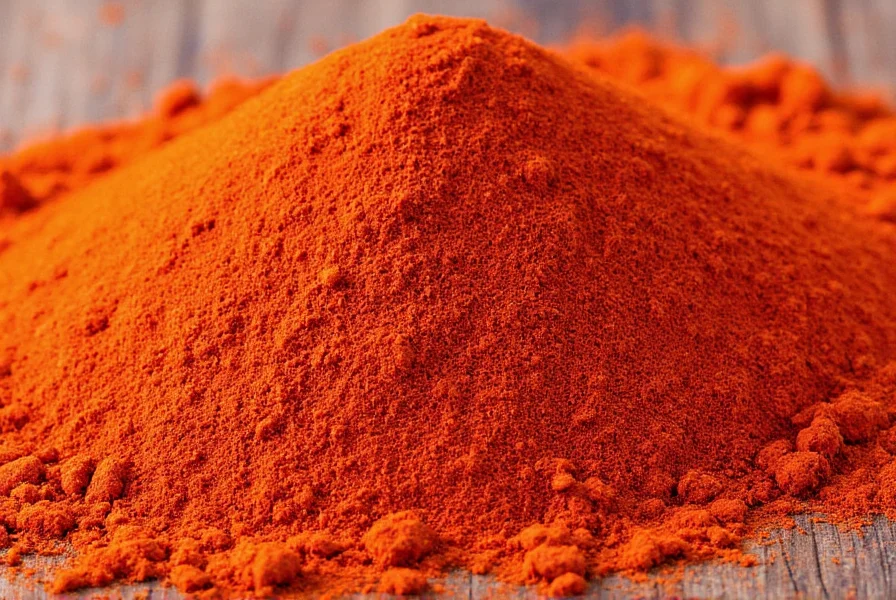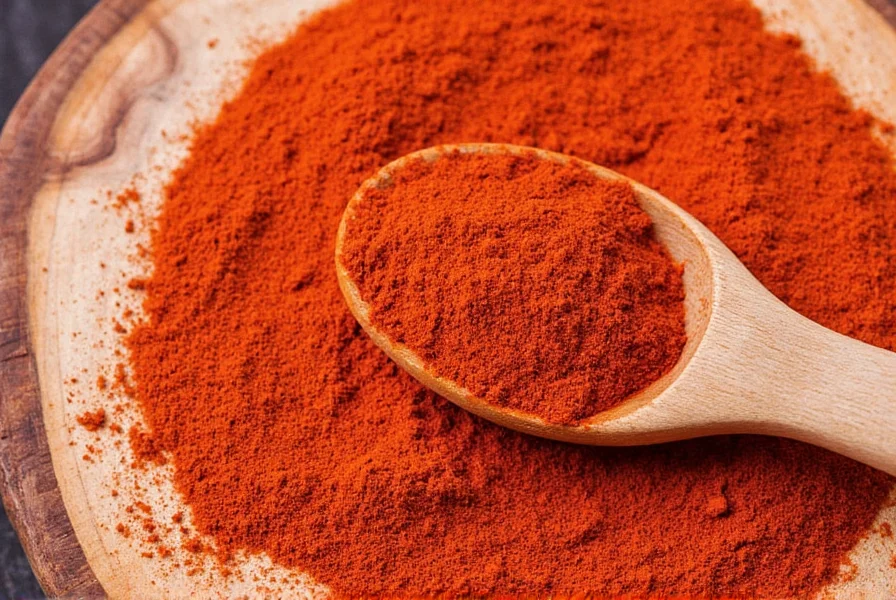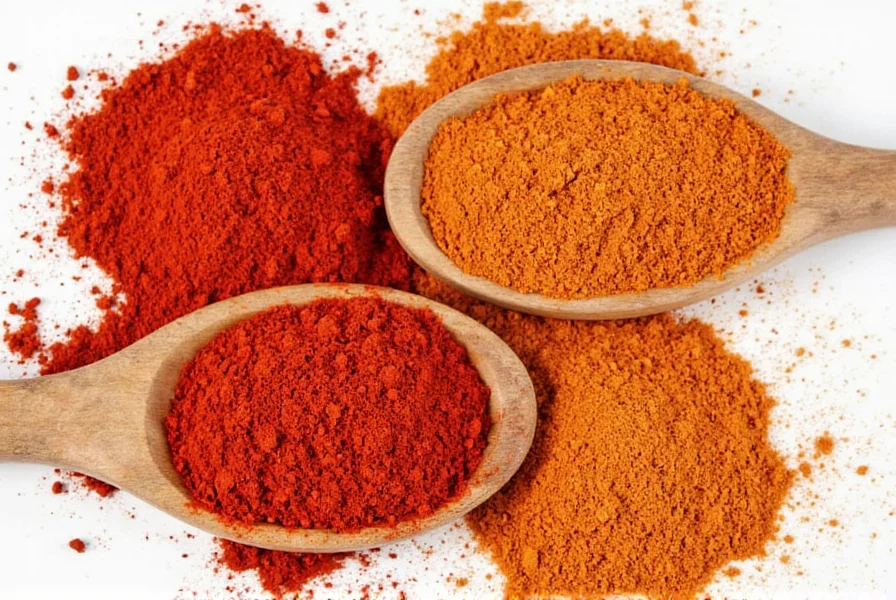When you're in the middle of cooking and realize you've run out of paprika, knowing reliable alternatives can save your recipe. Paprika, made from ground sweet or hot peppers, adds distinctive color and flavor to dishes ranging from Hungarian goulash to Spanish paella. Understanding what makes paprika unique—its vibrant red hue, varying heat levels, and sometimes smoky notes—helps identify the most appropriate substitutes for your specific culinary needs.
Understanding Different Paprika Varieties
Paprika isn't a one-size-fits-all spice. Recognizing which type you need to replace is crucial for selecting the right substitute:
- Sweet paprika - Mild, slightly sweet flavor with no heat
- Smoked paprika - Made from peppers smoked over oak fires, adding deep smoky notes
- Hot paprika - Contains spicy pepper varieties for noticeable heat
- Sweet Hungarian paprika - Distinctive flavor profile essential for traditional dishes

Best Substitutes by Paprika Type
Sweet Paprika Replacements
When your recipe calls for standard sweet paprika, these alternatives maintain the color and mild flavor profile:
- Tomato paste - Use 1 tablespoon for every 1 teaspoon of paprika. Adds similar color and subtle sweetness.
- Roasted red bell peppers - Blend 1/4 cup roasted peppers for every teaspoon needed. Provides natural sweetness and vibrant color.
- Pimento - Use equal parts ground pimento for similar mild flavor.
- Curry powder - Use half the amount (it's stronger). Best for complex dishes where additional spices complement the recipe.
Smoked Paprika Alternatives
Replacing the distinctive smoky flavor requires careful substitution:
- Chipotle powder - Use 1/2 teaspoon for every 1 teaspoon of smoked paprika. Adds both smoke and heat.
- Cumin + regular paprika - Combine 1/2 tsp cumin with 1/2 tsp regular paprika per teaspoon needed.
- Liquid smoke - Just 1-2 drops in moisture-rich dishes like stews. Overuse creates an artificial flavor.
- Smoked salt - Use in conjunction with other substitutes for subtle smokiness without altering proportions.
| Substitute | Ratio to Paprika | Best For | Flavor Notes |
|---|---|---|---|
| Tomato paste | 1 tbsp : 1 tsp | Sweet paprika | Sweet, earthy, adds moisture |
| Chipotle powder | 1/2 tsp : 1 tsp | Smoked paprika | Smoky with noticeable heat |
| Cayenne pepper | 1/4 tsp : 1 tsp | Hot paprika | Pure heat without smokiness |
| Chili powder | 1:1 | General replacement | Complex blend, varies by brand |
| Roasted red peppers | 1/4 cup : 1 tsp | Sweet paprika | Natural sweetness, adds moisture |
Hot Paprika Substitutes
When heat is the primary characteristic you need to replicate:
- Cayenne pepper - Use 1/4 teaspoon for every 1 teaspoon of hot paprika. Pure heat without the color.
- Red pepper flakes - Substitute 1/2 teaspoon crushed flakes per teaspoon needed. Provides heat with texture.
- Aleppo pepper - Use equal parts. Offers moderate heat with subtle fruitiness.
- Hot sauce - Add 1/2 teaspoon per teaspoon needed in liquid-based recipes.
Recipe-Specific Substitution Guidance
The best paprika replacement often depends on your specific dish:
- For Hungarian goulash - Use tomato paste with a pinch of caraway for authentic flavor profile when lacking sweet Hungarian paprika
- In Spanish chorizo or paella - Combine smoked salt with regular paprika or use a small amount of chipotle powder for that distinctive Iberian smokiness
- For deviled eggs - A touch of cayenne with regular paprika maintains the visual appeal while providing heat
- In chili recipes - Chili powder works as a direct substitute since it already contains paprika among other spices

Avoiding Common Substitution Mistakes
Even with the right substitute, these pitfalls can ruin your dish:
- Overcompensating for color - Don't add excessive substitute just to match paprika's vibrant red. Focus on flavor balance first.
- Ignoring moisture content - Wet substitutes like tomato paste or roasted peppers add liquid that can alter recipe consistency.
- Misjudging heat levels - Cayenne and chipotle are significantly hotter than most paprika varieties. Start with less and adjust.
- Adding multiple substitutes - Combining several alternatives often creates flavor confusion rather than a cohesive profile.
Storage Tips for Paprika and Substitutes
Proper storage maintains potency of both paprika and its alternatives:
- Store all ground spices in airtight containers away from light and heat
- Refrigerate tomato paste and roasted peppers after opening
- Label homemade spice blends with dates (most ground spices lose potency after 6 months)
- Freeze excess roasted red peppers in ice cube trays for future paprika substitution needs
Final Considerations for Perfect Substitution
Successful paprika replacement requires understanding both what you're missing and what your substitute brings to the dish. Always consider the role paprika plays in your specific recipe—whether it's primarily for color, mild sweetness, smokiness, or heat—before selecting your alternative. When in doubt, start with less substitute than you think you need, then adjust after tasting. Remember that while perfect replication might not be possible, thoughtful substitution can yield delicious results that honor the spirit of your original recipe.
Frequently Asked Questions
Can I use chili powder instead of paprika?
Yes, chili powder makes a reasonable substitute for paprika at a 1:1 ratio, though the flavor profile differs. Most chili powders contain paprika along with cumin, garlic powder, and other spices. This works well in chili, stews, and meat rubs but may alter the flavor in more delicate dishes like potato salad or deviled eggs where pure paprika flavor is essential.
What's the best paprika substitute for people with nightshade allergies?
For those with nightshade allergies (which include peppers), consider turmeric for color (use sparingly as it's potent) combined with a touch of black pepper for complexity. Annatto seed oil provides vibrant color without nightshades. For smoky flavor without peppers, try a tiny amount of liquid smoke with your color substitute. Remember these won't replicate paprika's exact flavor but can provide visual appeal and some complexity.
How do I substitute paprika in a dry rub?
In dry rubs, use equal parts chili powder for general replacement. For smoked paprika, combine 1/2 teaspoon chipotle powder with 1/2 teaspoon regular paprika substitute per teaspoon needed. For sweet paprika, use a combination of 3/4 teaspoon garlic powder with 1/4 teaspoon cumin. Always mix your substitute thoroughly with other dry ingredients and let the rub rest for at least 30 minutes before applying to allow flavors to meld.
Can I make my own paprika substitute blend?
Absolutely. For a versatile sweet paprika substitute, blend 2 parts dried tomato powder, 1 part garlic powder, and 1/2 part onion powder. For smoked paprika replacement, add 1/4 part chipotle powder to this blend. For hot paprika, increase the chipotle to 1/2 part. Store your custom blend in an airtight container for up to 3 months. This approach gives you control over the flavor profile and ensures freshness better than store-bought alternatives.
Why does my paprika substitute make my dish bitter?
Bitterness often results from using too much cayenne, chipotle, or other hot alternatives. Paprika is generally mild, so substitutes requiring adjustment can easily overpower a dish. Another cause is burning your substitute—many alternatives like tomato paste or garlic powder burn more easily than paprika. Always add substitutes gradually, tasting as you go, and avoid high heat when incorporating them into your dish.











 浙公网安备
33010002000092号
浙公网安备
33010002000092号 浙B2-20120091-4
浙B2-20120091-4